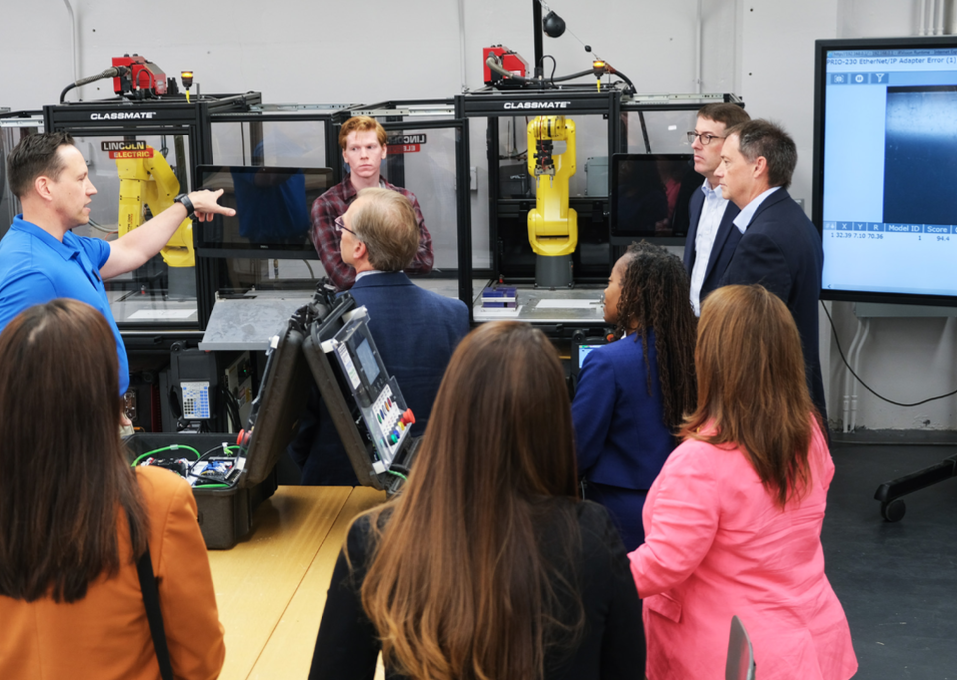TREP Funds Research

CARMEN UTC
In 2023 Ohio State won a highly competitive five-year, $15 million U.S. Department of Transportation University Transportation Center aimed at reducing transportation cybersecurity risks. This center is called CARMEN UTC. TREP funding was a critical component of the required cost share, making this program win possible. The CARMEN UTC is now underway and will support 14 graduate students and 15 principal investigators and researchers annually at four partner institutions, including a new highly innovative partnership with North Carolina A&T University, an HBCU. More than half of the faculty and students supported on the program are here at Ohio State.
SAFETY21 UTC
The TREP program has contributed to the significant cost sharing required of participating universities in this UTC program. TREP supports Ohio State’s participation in the Safety21 UTC consortium led by Carnegie Mellon University, which focuses on connected vehicle autonomy and physical and digital infrastructure, both in service of transportation safety. In particular, the TREP funding provides a significant portion of the stipend and travel funding for graduate student researchers who participate in this UTC.
STAMP
The Security, Trust, and Assurance for Microelectronic Protection (STAMP) project represents a collaborative endeavor between Ohio State’s Electrical and ComputernEngineering (ECE) and Computer Science and Engineering (CSE) departments, in conjunction with the University of Florida. With a substantial investment of $5 million over three years, STAMP aims to pioneer the development of a highly secure reduced instruction set computer (RISC-V) based system on a chip (SoC). This innovative SoC integrates two RISC-V processors, a lightweight cryptography core featuring 12 internal variants, as well as an Advanced Encryption Standard (AES) with three internal cores, along with essential security primitives and an embedded field-programmable gate array. The STAMP SoC, boasting an impressive count of approximately 20 million gates and occupying an area of eight square millimeters, has been successfully fabricated and subjected to rigorous testing. Furthermore, the project anticipates numerous forthcoming publications that will disseminate its groundbreaking findings and advancements in the field of microelectronic protection.
CYAN
The Center for Enabling Cyber Defense in Analog and Mixed Signal Domain (CYAN) is another collaborative effort between Ohio State and the University of Florida, which conducts cutting-edge research in hardware- enabled cybersecurity, focusing on advancing analog and mixed signal (AMS) security. With nine journal publications, 32 conference presentations, and three patents, CYAN has made significant contributions to the field. Also, the program has funded 33 students, resulting in 13 graduates across various academic levels, who have been successfully employed in the microelectronics industry. Leveraging its initiatives, the CYAN team has secured funding for an additional 15 projects totaling $8.7 million, demonstrating the significant impact of its research endeavors. Additionally, the CYAN is supported by a grant from the Air Force Office of Scientific Research (AFOSR), further highlighting its recognition and support related to securing the design, fabrication, and operation of AMS technologies.
SVC
The National Science Foundation Industry-University Cooperative Research Center Smart Vehicle Concepts Center (SVC) established a Research Seed Program that aims to stimulate research collaborations between College of Engineering researchers and industry to the point where a compelling proposal can be developed to generate industry sponsorship within SVC. In 2022, the winning proposal was “AI-enabled prediction of the effect of process porosities on the failure response of an. additive manufacturing aluminum alloy,” with Mechanical and Aerospace Engineering Prof. Soheil Soghrati as Principal Investigator. With this support, Prof. Soghrati seeks to establish a new SVC project on the topic of AI- based tools to assist the design of aircraft components.